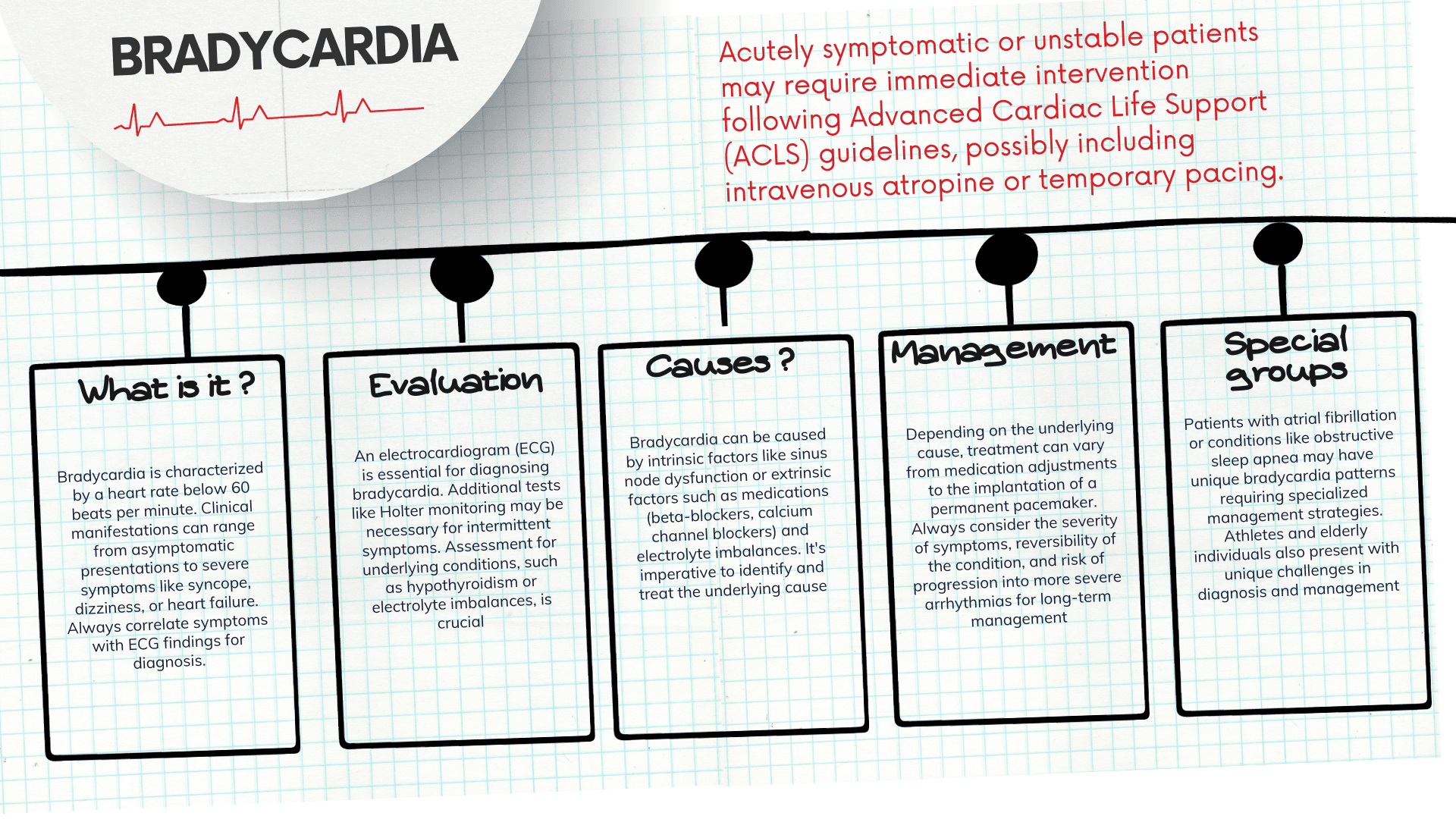Download A4Medicine Mobile App
Empower Your RCGP AKT Journey: Master the MCQs with Us!

Bradycardia, defined as a heart rate below 60 beats per minute, is a clinical finding that may be encountered in both healthy individuals and those with underlying medical conditions. While often benign, bradycardia can also be a manifestation of a serious medical issue requiring immediate attention. Given its varying clinical presentations and underlying mechanisms, understanding bradycardia is crucial for primary care clinicians and medical students alike. This article aims to provide a comprehensive overview of bradycardia, exploring its clinical presentation, pathophysiology, diagnostic approaches, and treatment options. To aid in your clinical practice, we offer a summarised table that encapsulates key aspects of this condition.
Whether you encounter bradycardia as an incidental finding on an electrocardiogram or as a concerning symptom, being equipped with this knowledge will enhance your diagnostic acumen and treatment efficacy.
| Category | Details | Reference |
|---|---|---|
| Definition | Heart rate of fewer than 60 beats per minute. It's not necessarily pathological. More prevalent in the elderly. | [1] |
| Symptomatic Bradycardia | It is defined as bradyarrhythmia directly responsible for clinical symptoms like syncope, dizziness, heart failure symptoms, or confusion from cerebral hypoperfusion. | [2] |
| Aetiology | ||
| Major Causes | ||
| Sinus Bradycardia | Definition: Heart rate <60 bpm with normal sinus rhythm on ECG. Common Causes:... |
Try our Free Plan to get the full article.